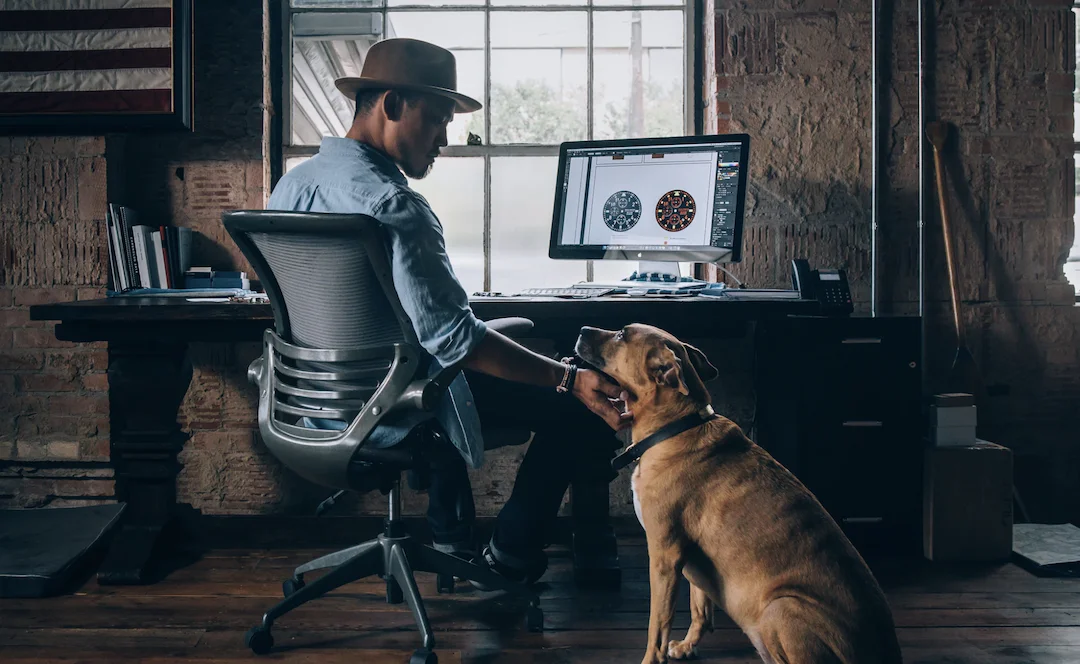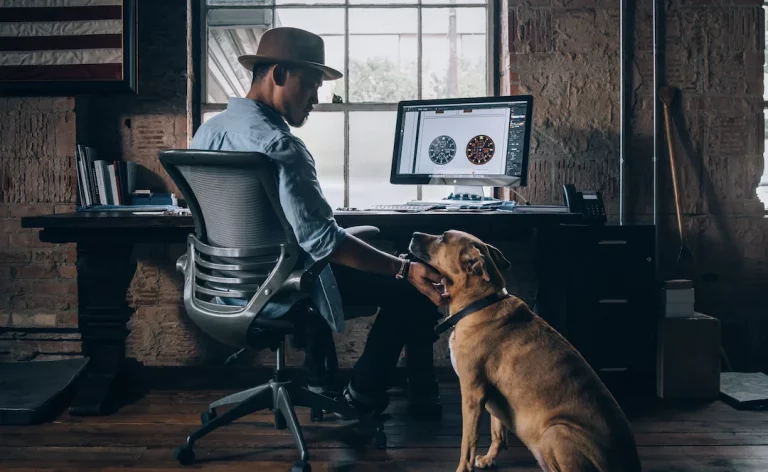In my line of work, I meet creative talents from all walks of life and disciplines of choice. From fresh grads to seasoned vets, spanning print and digital to experience and product…. Meet enough of them and patterns start to emerge. You can intuit who’s in it for the money, and who’s in it for the passion. You can tell who’s going to give you a 110% and who’s just phoning it in. So what are the telltale signs? What separates good designers from great designers? If you’re a designer, which one are you or aspire to become? Are you a member of the strategic team, or a mere hired hand? If you’re a client, which kind of designer is your creative agency or brand agency giving you? Here’s a checklist of the 7 qualities that separate the pros from the pretenders.
1. Great designers are curious
My 1st instinct is to say, the no. 1 thing a great designer must be is “human” (eyebrows and a pulse will help too), but I’ve learned from futurist Amy Webb that machines are increasingly taking over design functions, so there goes that. So, the no. 1 thing designers must be is curious. Even machines are by nature curious and crave information (without which there’s no algorithm).
So often clients tell us what they want. A bigger logo, a smaller fee… or a campaign that looks like that other campaign that made people cry or put on their trousers and run out to buy (or better yet, do both). When asked to design around such a brief, my immediate response is always, “Why?”. Not because it buys me more time (though that’s that too), but mostly because so many briefs are about the What and not about the Why. A good designer would know instinctively what the client is looking for, deliver beautiful artwork, and then bag a swift approval and move on to the next job. Billings in, champagnes all around.
No.
The great designer goes beyond the brief. The great designer isn’t afraid to challenge the brief and ask the tough questions. The great designer gives not what the client wants but what the client needs. A good designer do, a great designer thinks before they do. So when faced with a brief, do you read? Or do you read critically? Do you immediately put pen to paper, and like ghostwriting let the answer eke itself out? Or do you begin by questioning if we’re asking the right questions and solving the right problem, before you even begin to hazard a solution?
In branding work, design and business are closely linked. If you’re not taking the time to understand the client’s business and advertising choices and advantages, you’re just making pretty things and not things of significance.
2. Great designers are empathetic
It’s been said that designers are some of the nicest, most generous, humble, giving and peace-loving people in the world. That’s because designers are by nature empathetic creatures. Good designers are skilled at what they do. Great designers bring to the table that much more: Empathy.
Everyone’s talking about user-centric design and advertising these days… understanding customers, designing around the customer, or designing with users in mind. It’s the root of all the latest technobabble and marketing buzzwords, like UX, omnichannel, customisation and content marketing. And all these need to come from a place of empathy. As a designer, you need to be able to understand the customer for whom you’re designing things for. This is even more relevant when it comes to branding. Branding is all about establishing an emotional connection and growing that relationship with an audience. If you’re not investing a significant part of your creative process to researching and understanding the audience, and absorbing that into your thinking, and then using that to guide your every design decision, then you would’ve proven yourself the weakest link. Goodbye.
3. Great designers do not design for themselves
Whu-what? Many designers – particularly younger ones – find it difficult to wrap their heads around this. They’ve graduated with a design degree, are influenced by certain design heroes, and have their own design preferences and style. This could be due to a lack of exposure or worse, ego. I’ve spoken to designers who subconsciously shoehorn different brands into their design style, particularly 1 or a range of which they’re comfortable with or find aesthetically pleasing and personally edifying, so it sits pretty in their portfolio.
While there are many grey zones in the world of creativity and how one approaches the creative process, there are actually “right” and “wrong” ways of designing for a brand. Emphasis being on “designing for a brand”. You cannot be designing for yourself. If you’re curious, and are empathetic, you would then be designing the brand around what the business needs to become, and what its customers can resonate with.
Key lesson is: If you want to design for yourself, be an artist. If you’re a designer at a creative or brand agency, let go of your ego…and come to grips that you’re designing for others.
4. Great designers do different things
In HR, there’s lots of talk about hiring for T-shaped people. This basically means hiring people who have broad knowledge of everything but with specialisation in 1 thing. Personally, I like to hire at least Pi-shaped designers, or better, jellyfish-shaped ones. Sometimes I’d hire T-shaped designers and try and coax an extra leg or 2 out of them. This is absolutely essential.
Today’s design economy is all about content velocity, and platforms are melding and strategies are blending. In this economy, speed is currency. Agencies simply need to be nimbler and work faster. Everyone needs to get into everybody else’s business. A designer needs to understand how print can interact with digital, or how each medium works synergistically with everything else. A PR manager needs to know digital marketing. A programmer needs to know SEO. Traditional web designers need to learn code and cinematic UX. Film directors are designing. Designers are film directing. It’s an orgy and we’re all invited. So you can either jump in, or turn your noses up and stay on the sidelines. But if you opt to stay on the sidelines, that’s the quickest ticket to creative extinction. You’ll either have to wander around 1 of those decaying Walking Dead towns to find that special T-shaped someone with a complementary skill to pick up on your slack and lumber into the sunset together, or you can be a jellyfish.
My advice is, be a jellyfish. They seem to have all the fun.
5. Great designers never switch off…except when they switch off, but then again, not really
Design. It’s all around us. It’s on every Starbucks cup, every bus that chugs along, every leaf on the ground, every stitch on your clothes, every ray of sunshine…. I’ve had more creative inspirations running through a nature reserve on a Sat morning than thumbing through design annuals in the office. Creativity is not a 9-to-5 job. It’s 24/7. You’re always thinking and observing. Even your dreams are a fount of possibilities. Inspiration can strike anytime, anywhere. On your long runs, during your naps, on the shirt on the back of some stranger…. Your client’s brand doesn’t live in a bubble. Neither should your solution. The world doesn’t stop, your brain doesn’t stop. You, like Miley, just can’t stop.
At the HOW Design Live 2016 conference, the message was loud. Designers really embraced the message of “Unplugging”, courtesy of Tiffany Shlain, who advocated the concept of taking a technology shabbat, both at a keynote and on an episode of her web series The Future Starts Here. This basically means no screens for 1 day every wk. No TV, no mobiles, no social media, no laptops, no tablets. Crap, what’s left? Well, what’s left is quality time to reconnect. With your family, yourself and your inner creativity. Read, rake, draw, converse, cook, crochet, play basketball, or simply daydream…whatever allows you to cut out the social chatter and compulsive need to be “liked” or “loved” or posture or “followed”. Instead, let your mind and creativity breathe and flourish. So if you are going to switch off at all, do so literally.
6. Great designers like being weird
‘Nuff said.
7. Great designers know how to sell
Not enough, however, can be said about designers who do not know how to sell. Guys, a picture doesn’t speak a thousand words. Words speak a thousand words. And your work doesn’t speak for itself. It’s frickin’ inanimate. Your design doesn’t sell itself. You do. If things sell themselves, there would be no need for marketing and advertising.
Great designers explain their design choices and rationale. If you have done responsible design, such as conducting the necessary research, filtering your choices through what makes sense for the brand and the audience, you will have no trouble at all explaining and backing up your design. It comes from a place of credibility, expertise and authenticity. Work in a branding agency long enough and you’ll understand that seldom do clients approve a design just because you like it. So don’t just learn to design, learn to also hustle and sell.






